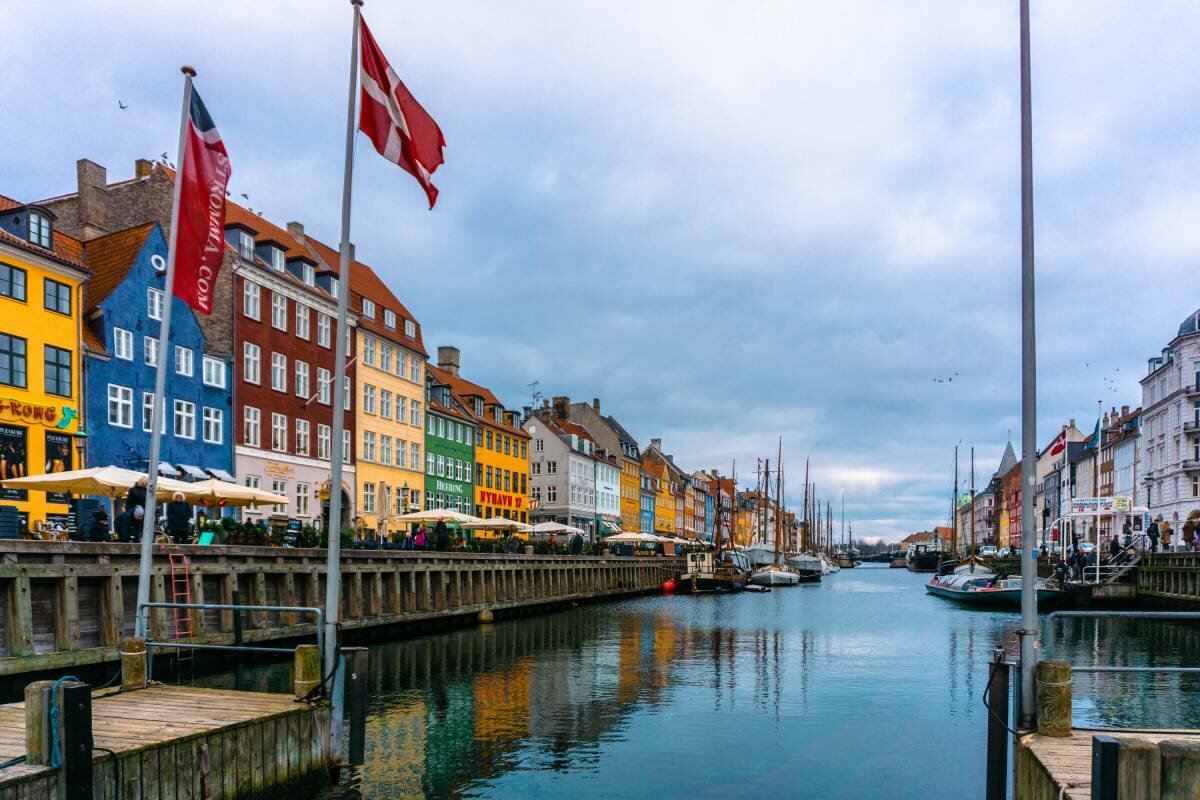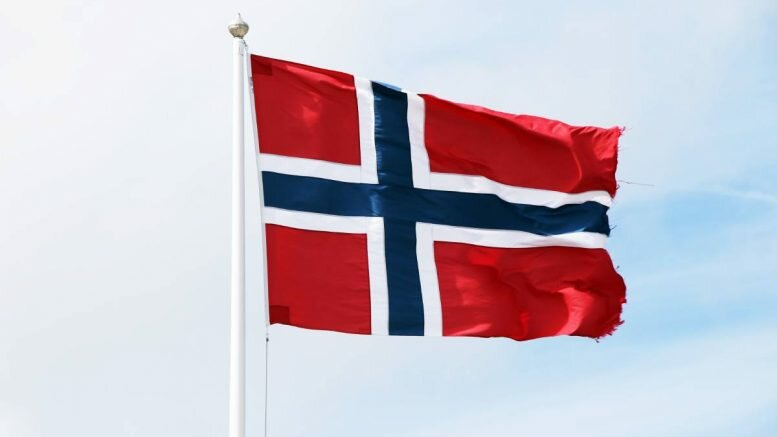From obscure banners during the Viking Age to the Norwegian flag we know today, the country with the most fjords on earth has known numerous emblems throughout the centuries. Read on to discover the fascinating history behind the flag of Norway.
Prior to the 18th century, when the idea of patriotic nationalism began to develop, most countries didn’t have their own flags the way we do today. During times bygone, showing emblems was reserved for kings and nobles who – mostly during battle – flew their own coat of arms.
Today, the tenets of society are individual nations, each with its own political, economic, and cultural systems. The most concise representation of a nation in its complex entirety is a flag.
And so, these billowing national symbols have a transformative power that can elicit emotions, be they negative or positive, from dispirited or proud citizens, from offended or appreciative non-citizens.
Read on to discover the Norway flag meaning and how it developed from a medieval-era coat of arms to the characteristic red background showcasing a white-bordered blue cross we know today.
The 9th century to the 13th century: unknown emblems
Many accounts of Scandinavian history are told in the famous Icelandic sagas that date back to the 13th and 14th centuries.
Modern historians mostly consider these sagas to be historical fiction, not only due to their mythological nature but also because they recount the stories of events and people from centuries before their own era.
However, the sagas are still used in the study of ancient Nordic countries to complement archeological finds.
From the Viking Age to the 14th century, Norway was ruled mostly by Norwegian earls and monarchs. It’s unknown how the flag of Norway, that is, how any emblems of Norway looked during these times, but the Icelandic sagas provide fodder for conjecture.
For example, saga author Snorri Sturluson wrote that King of Norway Magnus III (c. 1093 – c. 1103) used a golden lion on a red background as his coat of arms.
1321: the first known depiction of a Norwegian emblem
The first Norway flag, that is, emblem, depiction that we’re aware of today, comes from 1321 and is used in the seal of Princess Ingebørg of Norway (c. 1301 – c. 1361).
Let’s set the scene.
During the early 14th century, Norway was on the cusp of going from a self-standing monarchy to sharing a ruler with Sweden.
Princess Ingebørg of Norway married Prince Eric Magnusson of Sweden, and soon, she gave birth to their son Magnus. Magnus went on to become king of both Norway and Sweden.
Princess Ingebørg’s personal seal is preserved in a parchment letter from 1321. It’s currently being kept at the Swedish National Archives in Stockholm.
In the seal, Ingebørg is depicted holding two banners: on the left side is thought to be the emblem of Norway (featuring a lion holding an axe), and on the right side is the emblem of Sweden.
To this day, the lion carrying an axe is used as an emblem of Norway within the Standards of the Norwegian Royal Family.
The late 14th century to the early 19th century: with a new union comes a new flag
The son of Queen Margaret I of Denmark and King Haakon VI of Norway was Olaf Haakonsson (c. 1370 – c. 1387). Olaf became the first joint ruler of Norway and Denmark. His short-lived reign preceded the period between 1397 to 1814, known as Norway’s “400-Year Night,” which marked a decline in liberties of the Norwegian people.
In 1397, Olaf’s mother, Queen Margaret I, established the Kalmar Union, joining Norway, Denmark, and Sweden under her rule.
The Kalmar Union lasted until 1523 when Sweden rebelled, successfully breaking off under King Gustav I (1496 – 1560) of Sweden.
This resulted in the Kingdom of Denmark-Norway, which had a shared army, capital (Copenhagen), colonies – and inevitably, flag. Thus, Denmark’s (today considered the oldest in the world) became the kingdom’s overarching flag.

Despite opposition, as an attempt to strengthen the kingdom, an absolutist and hereditary monarchy of Danish rulers was decreed in 1660 in Copenhagen.
And so, then-king Frederik III and those following him became effectively all-powerful in Denmark until 1849, when absolutist rule was abolished in the country.
Due to a rise in decadence rather than diplomacy, and following a string of wars with Sweden over the centuries, the Denmark-based monarchy began to lose its stronghold over Norway.
The last ruler of the Denmark-Norway Kingdom was Frederick VI (1868 – 1839), who allied with Napoleon Bonaparte against the United Kingdom in 1807.
1814 – 1904: paving the way for Norway’s independence and modern-day flag
Due to Napoleon’s swelling downfall, Denmark suffered too and ceded Norway to Sweden’s then-King Charles XIII through the Treaty of Kiel signed in January of 1814. However, Norway refused to accept the treaty’s terms and instead maintained that the nation should be granted its own sovereignty.
In July of 1814, Sweden invaded Norway and suppressed the uprising. Soon after, the Treaty of Moss established a union between Norway and Sweden in August of 1814.
Between the signing of the two treaties, however, Norway took a considerable step toward complete independence: signing its own constitution on May 17, 1814, with which it entered the union with Sweden as an independent state.
Following the Norway-Sweden union, Norway kept the Danish flag design but added an axe-wielding Norwegian lion to the top left corner.
In 1821, member of parliament Fredrik Meltzer created a novel flag design, that of the Norway flag today. Its colors, red, white, and blue, were commonly recognized at the time (following the American and French revolutions and consequent flags) as signifying freedom.
The color scheme used by Meltzer also paid tribute to Norway’s past (with red being the Danish flag color and blue being the Swedish flag color) as well as Christianity, through the cross.
But, before gaining complete independence, Norway added another flag to its belt: the so-called “herring salad” flag, nicknamed after a colorful fish dish of the same name.
Norway and Sweden each added a union mark to the top right corner of their flags from 1844 – 1898 to signify their partnership.
1905: an independent country, a Norwegian flag
From the end of the 19th century, tensions had been rising between Norway and Sweden because of inequality in the union and a growing sense of national pride.
Norway was still subordinate to Sweden regarding all foreign policy matters, and so, the Norwegian National Assembly voted in a decision to establish a separate consular service of their own.
Then-King Oscar II refused to sanction the service, which prompted the Norwegian government to resign. Appointing a new government proved impossible for the king, and so, on June 7, 1905, the Norway-Sweden union was dissolved.
Since then, Norway has marked over 100 years of total independence under its own flag, featuring the original 1821 design.
Today, the flag of Norway is flown across the country to mark several important historical dates: Union Dissolution Day, which is marked on June 7, and the highly celebrated Constitution Day, which is Norway’s National Day and a public holiday observed each year on May 17.
So, the next time you’re planning a vacation to the country with the most fjords on earth, keep May 17 in mind and skrive noe bak øret (meaning “make a mental note” and literally translating to “write something behind the ear”).
May 17 is your opportunity to see the Norwegian flag flying high and happy crowds parading down the streets. Between sips of Hansa Borg Bryggerier, reflect on the centuries-long perseverance and independence fight behind the festivities.
Source: Norway Today, #NorwayTodayTravel
Do you have a news tip for Norway Today? We want to hear it. Get in touch at [email protected]




I’ve always seen the Norwegian flag displayed in my family’s art works from even before 1905 and have been proud of it. I appreciate this well written history.